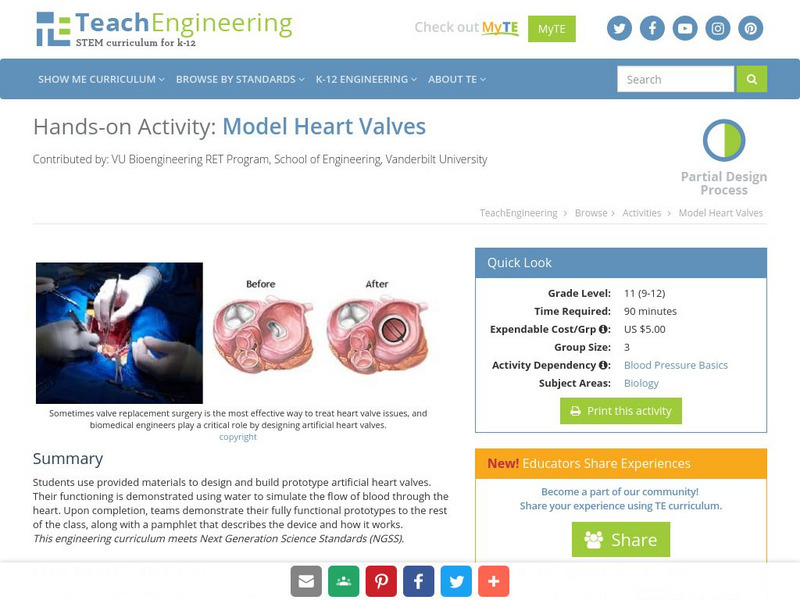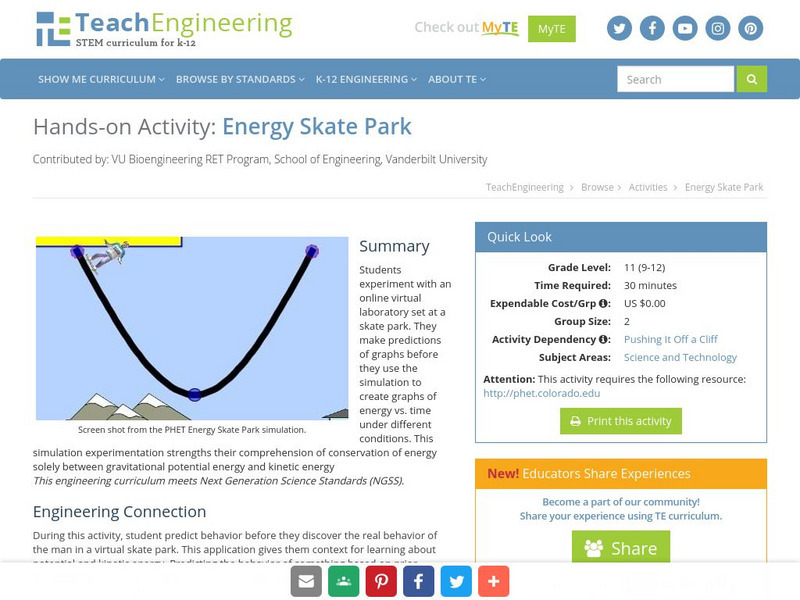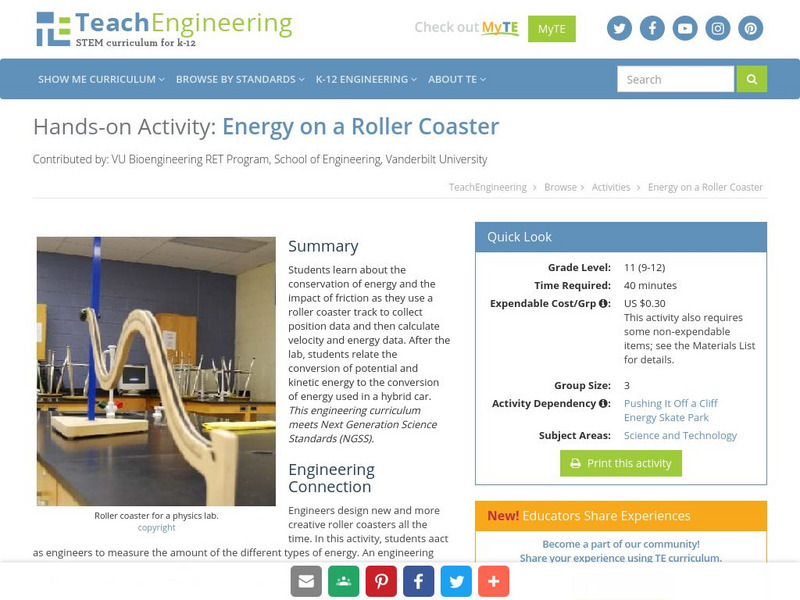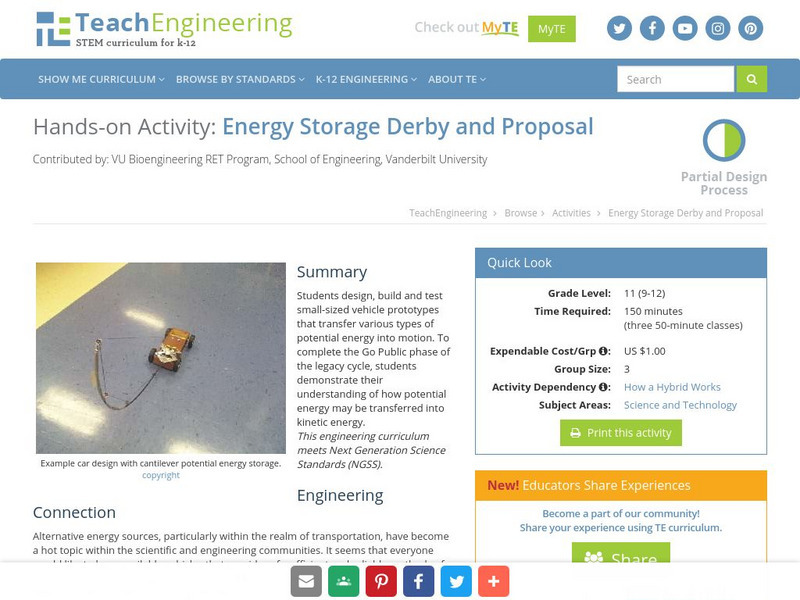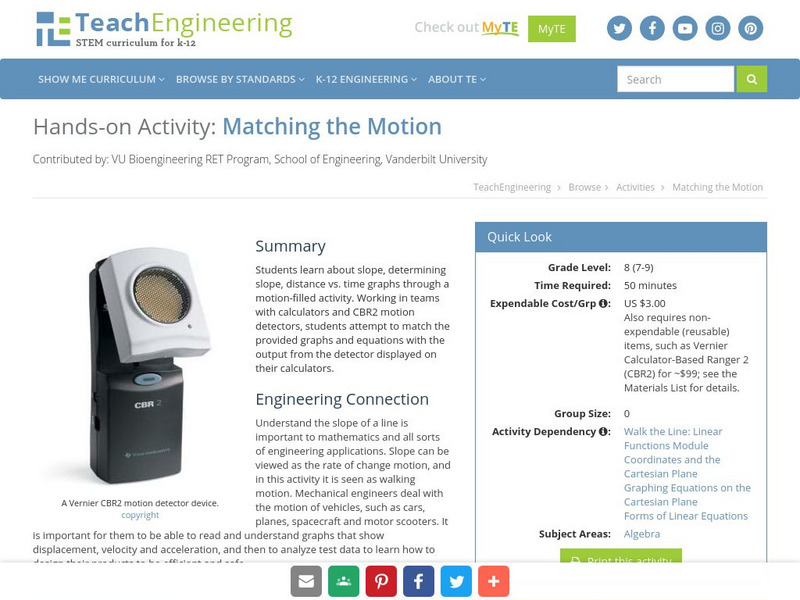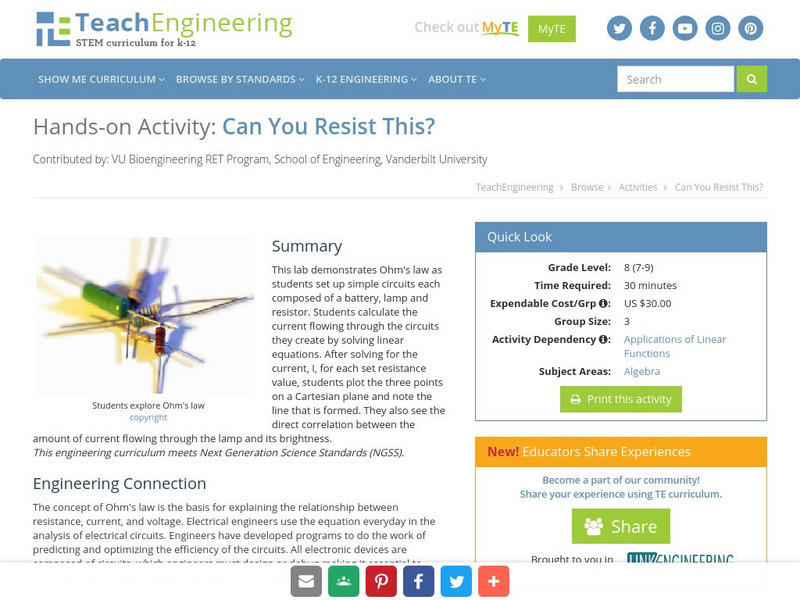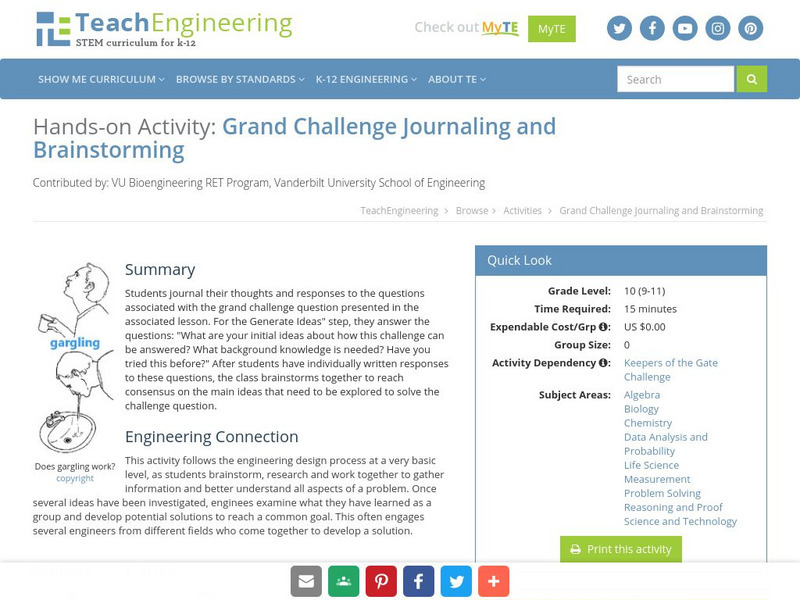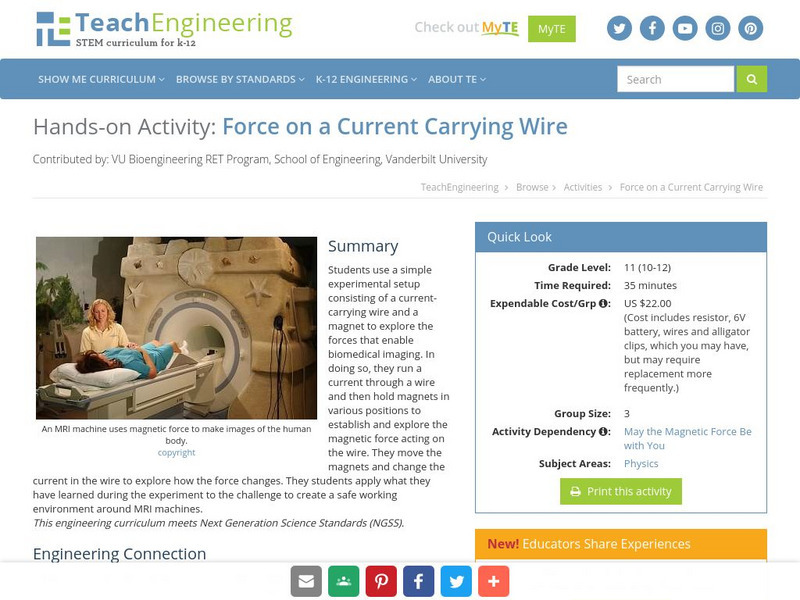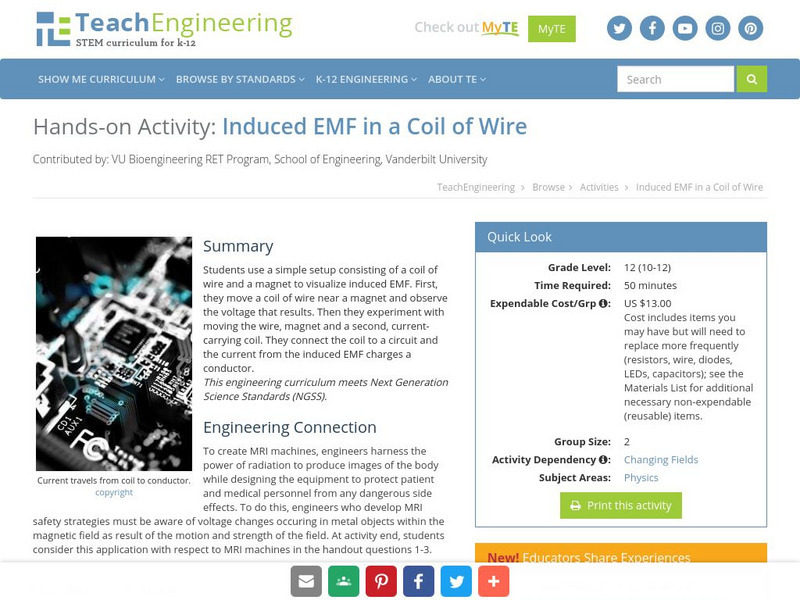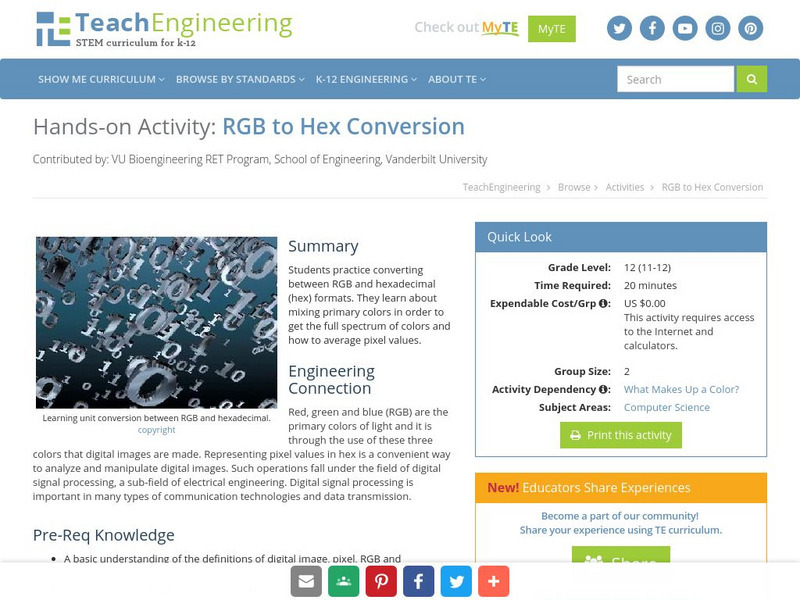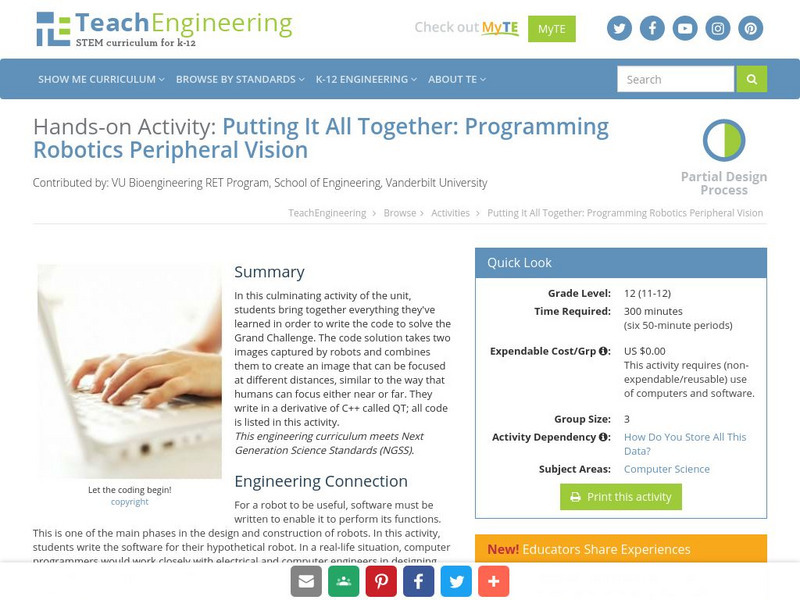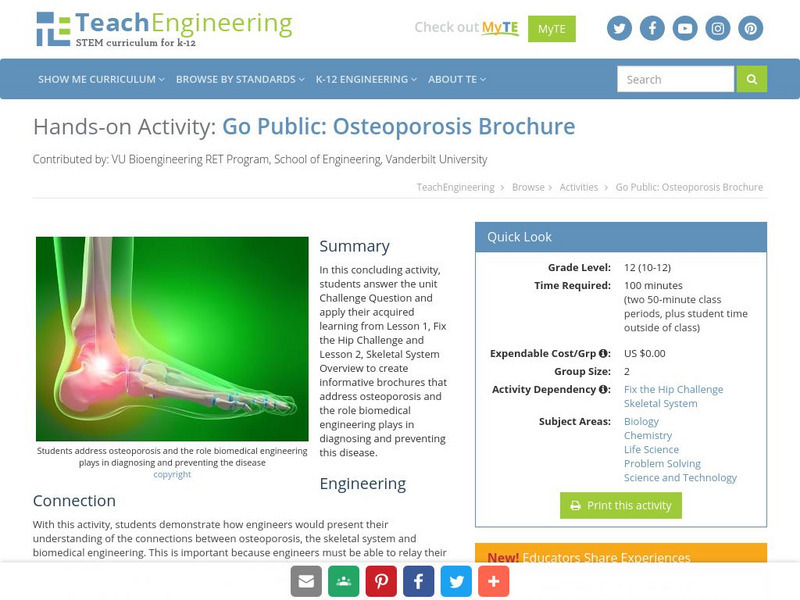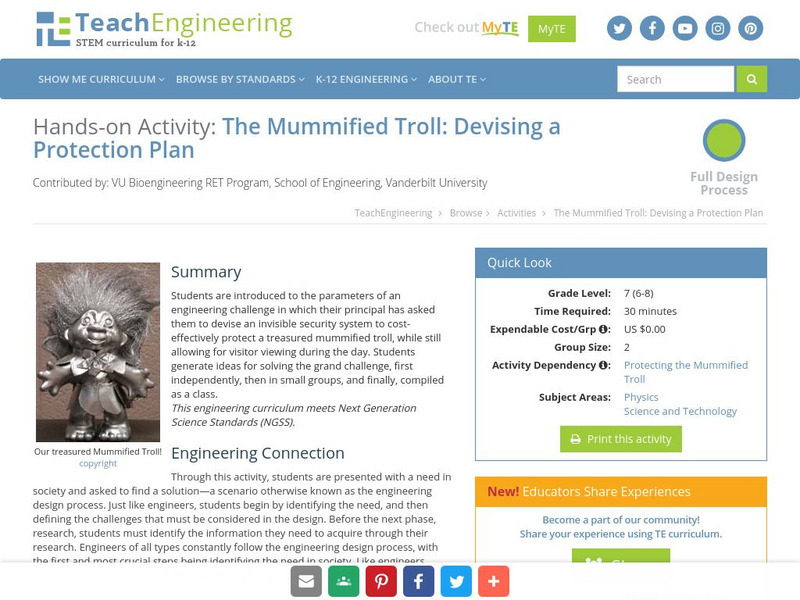TeachEngineering
Teach Engineering: The Mighty Heart
Students learn about the form and function of the human heart through the dissection of sheep hearts. They learn about the different parts of the heart and are able to identify the anatomical structures and compare them to the all of the...
TeachEngineering
Teach Engineering: What's With All the Pressure?
Students learn how to take blood pressure by observing a teacher demonstration and then practicing on fellow classmates in small groups. Once the hands-on component of this activity is completed, the class brainstorms and discusses how...
TeachEngineering
Teach Engineering: Model Heart Valves
Students use provided materials to design and build prototype artificial heart valves. Their functioning is demonstrated using water to simulate the flow of blood through the heart. Upon completion, teams demonstrate their fully...
TeachEngineering
Teach Engineering: Energy Skate Park
This activity focuses on the conservation of energy solely between gravitational potential energy and kinetic energy. Students work with a virtual laboratory set at a skate park. They make predictions of graphs before they use the...
TeachEngineering
Teach Engineering: Energy on a Roller Coaster
This activity utilizes hands-on learning with the conservation of energy and the interaction of friction. Students use a roller coaster track and collect position data. The students then calculate velocity, and energy data. After the...
TeachEngineering
Teach Engineering: Energy and the Pogo Stick
This activity utilizes hands on learning with the conservation of energy with the inclusion of elastic potential energy. Students use pogo sticks to experience the elastic potential energy and its conversion to gravitational potential...
TeachEngineering
Teach Engineering: Energy Storage Derby and Proposal
In Activity 5, as part of the Going Public step, students demonstrate their knowledge of how potential energy may be transferred into kinetic energy. Students design, build and test vehicle prototypes that transfer various types of...
TeachEngineering
Teach Engineering: Club Function
Students explore the definition of a function by playing an interactive game called "Club Function." The goal of the game is to be in the club! With students each assigned to be either a zebra or a rhinoceros, they group themselves...
TeachEngineering
Teach Engineering: Matching the Motion
Students learn about slope, determining slope, distance vs. time graphs through a motion-filled activity. Working in teams with calculators and CBL motion detectors, students attempt to match the provided graphs and equations with the...
TeachEngineering
Teach Engineering: Can You Resist This?
This lab demonstrates Ohm's law as students set up simple circuits each composed of a battery, lamp and resistor. Students calculate the current flowing through the circuits they create by solving linear equations. After solving for the...
TeachEngineering
Teach Engineering: Keepers of the Gate Journal and Brainstorm
Students journal their thoughts and responses to the questions associated with the grand challenge question presented in the associated lesson. For the Generate Ideas" step, they answer the questions: "What are your initial ideas about...
TeachEngineering
Teach Engineering: Cell Membrane Color Sheet and Build a Cell Membrane
Students color-code a schematic of a cell and its cell membrane structures. Then they complete the "Build-a-Membrane" activity found at http://learn.genetics.utah.edu. This reinforces their understanding of the structure and function of...
TeachEngineering
Teach Engineering: Active and Passive Transport: Red Rover Send Particles Over
Students compare and contrast passive and active transport by playing a game to model this phenomenon. Movement through cell membranes is also modeled, as well as the structure and movement typical of the fluid mosaic model of the cell...
TeachEngineering
Teach Engineering: Quantum Dots and the Harkess Method
Students explore the applications of quantum dots by researching a journal article and answering framing questions used in a classwide discussion. This "Harkness-method" discussion helps students become critical readers of scientific...
TeachEngineering
Teach Engineering: Visualizing Magnetic Field Lines
In this activity, students take the age old concept of etch-a-sketch a step further. Using iron filings, students begin visualizing magnetic field lines. To do so, students use a compass to read the direction of the magnet's magnetic...
TeachEngineering
Teach Engineering: Force on a Current Carrying Wire
Students use a simple set up consisting of a current carrying wire and a magnet to explore the forces which enable biomedical imaging. In doing so, students run a current through a wire and then hold magnets in various positions to...
TeachEngineering
Teach Engineering: Induced Emf in a Coil of Wire
Students use a simple set up consisting of a coil of wire and a magnet to visualize induced EMF. First, students move a coil of wire near a magnet and observe the voltage that results. They then experiment with moving the wire, magnet,...
TeachEngineering
Teach Engineering: Peripheral Vision Lab
Students explore their peripheral vision by reading large letters on index cards. Then they repeat the experiment while looking through camera lenses, first a lens with a smaller focal length and then a lens with a larger focal length....
TeachEngineering
Teach Engineering: Rgb to Hex Conversion
Students practice converting between RGB and hexadecimal (hex) formats. They learn about mixing primary colors in order to get the full spectrum of colors and how to average pixel values.
TeachEngineering
Teach Engineering: Putting It All Together: Peripheral Vision
In this culminating activity of the unit, students bring together everything they've learned in order to write the code to solve the Grand Challenge. The code solution takes two images captured by robots and combines them to create an...
TeachEngineering
Teach Engineering: What Is Going on With Grandma?
Students are introduced to the concepts of the challenge question. First independently, and then in small groups, they generate ideas for solving the grand challenge introduced in the associated lesson: Your grandmother has a fractured...
TeachEngineering
Teach Engineering: What Makes Our Bones Strong?
Students will use this activity to determine what keeps our bones strong. Soaking the bones in vinegar will remove the calcium from the bones causing them to become soft and rubbery. Students will find that when we age, calcium is...
TeachEngineering
Teach Engineering: Go Public: Osteoporosis Brochure
Students will answer the Challenge Question and use the acquired learning from Lesson 1, "Fix the Hip Challenge" and Lesson 2, "Skeletal System Overview"to construct an informative brochure addressing osteoporosis and the role biomedical...
TeachEngineering
Teach Engineering: The Mummified Troll: Devising a Protection Plan
Students are introduced to the parameters of an engineering challenge in which their principal has asked them to devise an invisible security system to cost-effectively protect a treasured mummified troll, while still allowing for...




